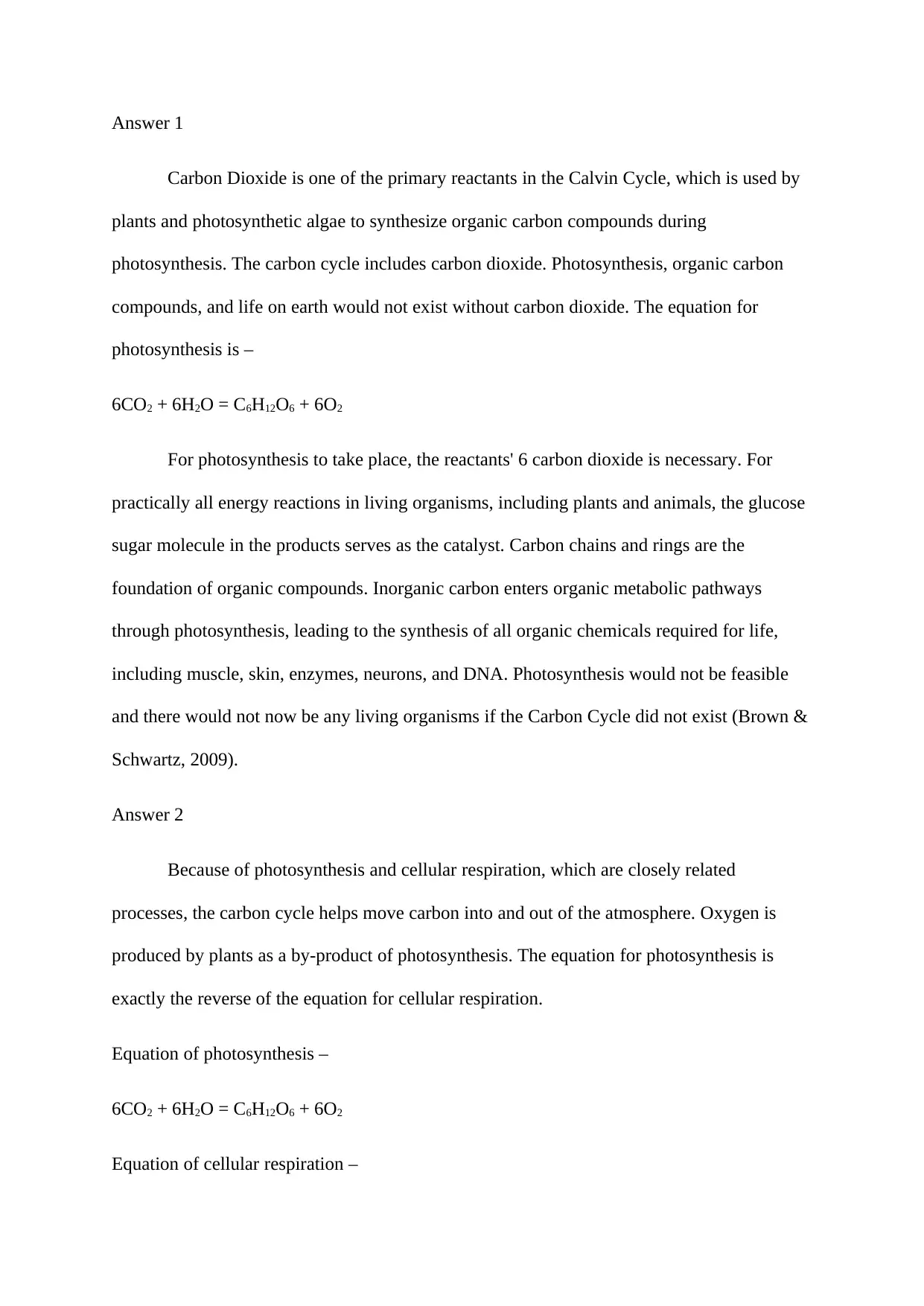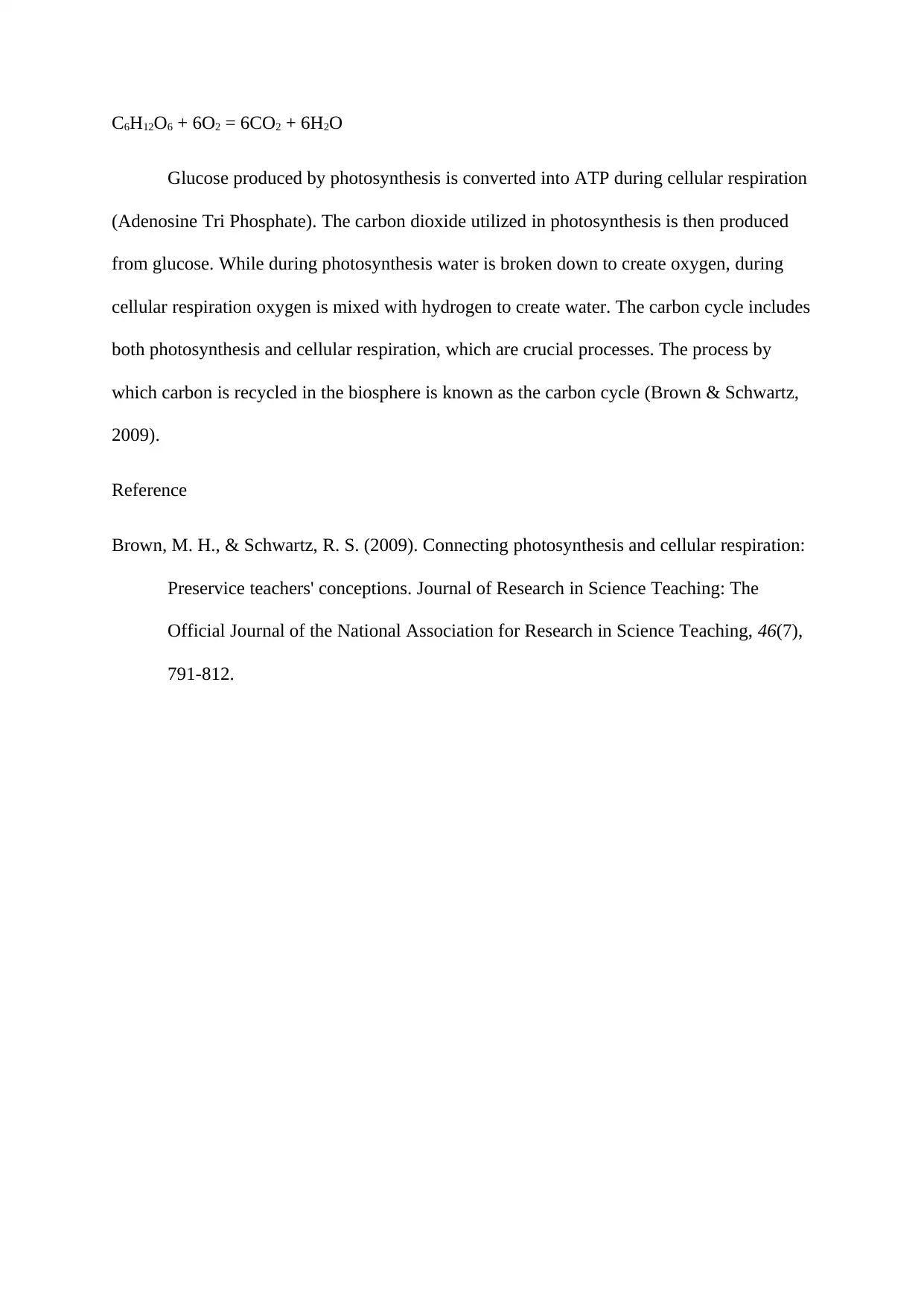Biology Assignment: Photosynthesis, Respiration, and the Carbon Cycle
VerifiedAdded on 2022/09/05
|2
|403
|30
Homework Assignment
AI Summary
This assignment explores the crucial relationship between the carbon cycle, photosynthesis, and cellular respiration. It explains how carbon dioxide is a primary reactant in photosynthesis, producing glucose, and how the carbon cycle facilitates the movement of carbon into and out of the atmosphere. The assignment highlights the equations for both photosynthesis and cellular respiration, showing their inverse relationship and the role of glucose and ATP. The importance of these processes for life and the synthesis of organic compounds is also discussed, referencing a scientific paper on the topic. This assignment is designed to provide a comprehensive understanding of these fundamental biological concepts.
1 out of 2








![[object Object]](/_next/static/media/star-bottom.7253800d.svg)